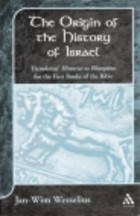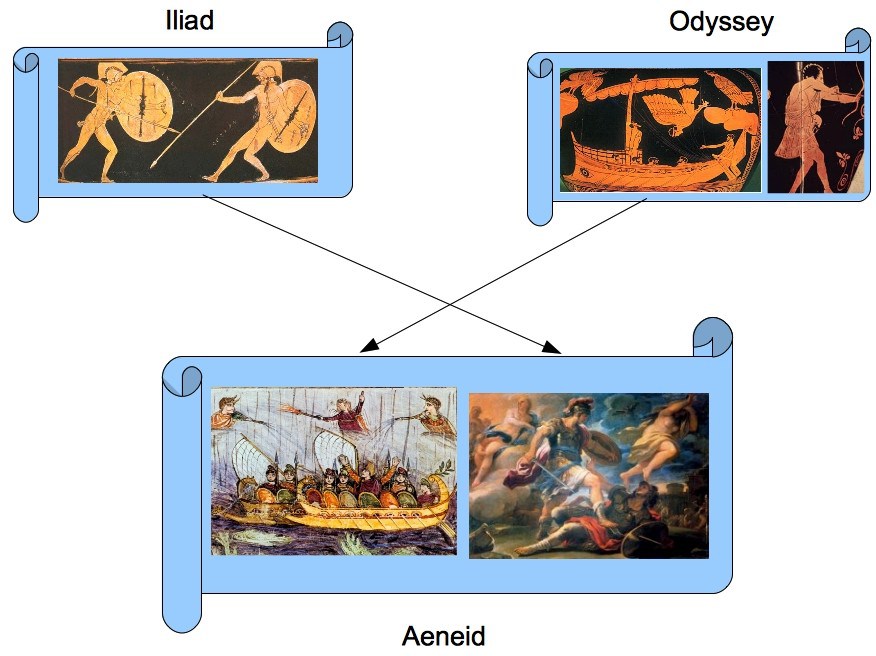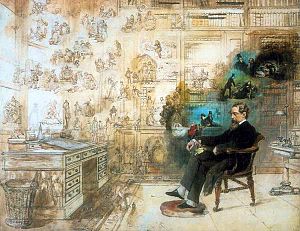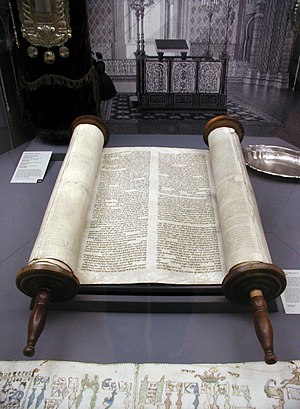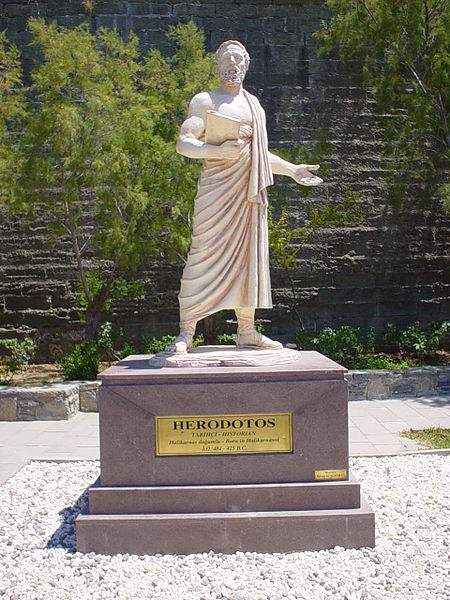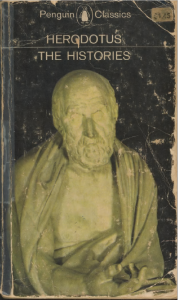
There are two types of miraculous tales in Herodotus’ Histories and Herodotus handled them differently. It is worth having a closer look at how he framed each type.
Gods, Miracles and Wonders
Gods appearing on earth
The Greeks have never been simpletons; for centuries past they have been distinguished from other nations by superior wits; and of all Greeks the Athenians are allowed to be the most intelligent: yet it was at the Athenians’ expense that this ridiculous trick was played. In the village of Paeania there was a handsome woman called Phye, nearly six feet tall, whom they fitted out in a suit of armour and mounted in a chariot; then, after getting her to pose in the most striking attitude, they drove into Athens, where messengers who had preceded them were already, according to their instructions, talking to the people and urging them to welcome Pisistratus back, because the goddess Athene herself had shown him extraordinary honour and was bringing him home to her own Acropolis. They spread this nonsense all over the town, and it was not long before rumour reached the outlying villages that Athene was bringing Pisistratus back, and both villagers and townsfolk, convinced that the woman Phye was indeed the goddess, offered her their prayers and received Pisistratus with open arms. (Book 1.60)
and
The shrine contains no image and no one spends the night there except (if we may believe the Chaldeans who are the priests of Bel) one Assyrian woman, all alone, whoever it may be that the god has chosen. The Chaldaeans also say – though I do not believe them- that the god enters the temple in person and takes his rest upon the bed. (Book 1.182)
To Hades and back
Another story I heard about Rhampsinitus was, that at a later period he descended alive into what the Greeks call Hades, and there played dice with Demeter, sometimes winning and sometimes losing, and returned to earth with a golden napkin which she had given him as a present. . . . Anyone may believe these Egyptian tales, if he is sufficiently credulous; as for myself, I keep to the general plan of this book, which is to record the traditions of the various nations just as I heard them related to me. (Book 2.122)
Immortals
I myself have heard a very different account of Salmoxis from the Greeks who live on the Hellespont and the Black Sea. According to this, he was a man like anyone else, . . . . he used to entertain the leading men of the country with much liberality, and endeavour to teach them that neither he nor they, who were his guests, nor any of their descendants, would ever die, but would go to a place where they would live in perpetual enjoyment of every blessing. All the time that he was trying to promulgate this new doctrine, he was occupied in the construction of an underground chamber, and when it was ready he entered it and disappeared from sight. For three years he lived in this room underground, and his fellow countrymen missed him sadly, and mourned for him as if he were dead; then in the fourth year he reappeared, and in this way persuaded the Thracians that the doctrine he had taught was true. For my part I neither put entire faith in this story of Salmoxis and his underground chamber, nor wholly disbelieve it . . . . (Book 4.95-96)
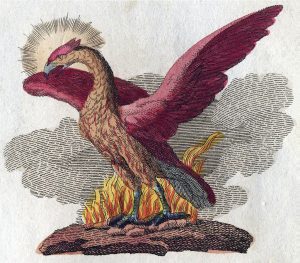
That famous phoenix
Another sacred bird is the phoenix; I have not seen a phoenix myself, except in paintings, for it is very rare and visits the country (so at least they say at Heliopolis) only at intervals of 500 years, on the occasion of the death of the parent-bird. To judge by the paintings, its plumage is partly golden, partly red, and in shape and size it is exactly like an eagle. There is a story about the phoenix: it brings its parent in a lump of myrrh all the way from Arabia and buries the body in the temple of the Sun. To perform this feat, the bird first shapes some myrrh into a sort of egg as big as it finds, by testing, that it can carry; then it hollows the lump out, puts its father inside and smears some more myrrh over the hole. The egg-shaped lump is then just of the same weight as it was originally. Finally it is carried by the bird to the temple of the Sun in Egypt. I give the story as it was told me – but I don’t believe it. (Book 2.73)
Magic power and werewolves
It is not impossible that these people practise magic; for there is a story current amongst the Scythians and the Greeks in Scythia that once a year every Neurian turns into a wolf for a day or two, and then turns back into a man again. Of course, I do not believe this tale; all the same, they tell it, and even swear to the truth of it. (Book 4.105)
Kneeling statues
. . . until an extraordinary thing happened. Personally I do not believe it, though perhaps somebody may – but the story is that each statue fell upon its knees, and in that attitude both have remained ever since. (Book 5.86)
Miracles authenticate the young and new
The Scythians say that they are the youngest of all nations, and the following is the account they give of their origin. The first man to live in their country, which before his birth was uninhabited, was a certain Targitaus, the son of Zeus and of a daughter of the river Borysthenes – I merely repeat the tradition, and do not myself believe it. Targitaus had three sons, Lipoxais, Arpoxais, and Colaxais, the youngest; and during their reign in Scythia there fell from the sky a golden plough, a golden yoke, a golden battle-axe, and a golden cup. The eldest of the three was the first to see these treasures, and as he went to pick them up the gold caught fire. At this he retired, and the second of the brothers approached; but the gold caught fire and blazed, just as before. Lastly, when the two elder brothers had been kept off by the flames, the youngest came along, and this time the fire went out, so that he was able to pick up the golden implements and carry them home. The elder brothers accepted this as a sign from heaven and made over the whole kingdom to Colaxais. (Book 4.5)
and so forth and so on.
Omens, Signs from God – Apollo of Delphi
The Gospels are prophecy driven narratives. They open with prophecies that Jesus is to come and perform God’s will. Prophecies declare a change in direction when the time comes for him to be crucified and then rise again. Continue reading “Herodotus and Miracles — Material for a Gospel Comparison”


